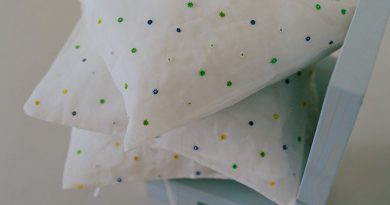Richemont Under Pressure | BoF Professional, News & Analysis
Richemont is set to report sales and profit Friday morning and the pressure is high.
After the luxury industry’s most popular brands like Louis Vuitton and Hermès reported roaring growth in the third quarter, analysts expect the Swiss group to enjoy a similar boom driven by Cartier, its biggest and most recognisable brand.
Richemont’s sales are set to rise 57 percent year on year to €8.65 billion ($9.92 billion) for the six months ending 30 September, HSBC estimates, or 21 percent above 2019′s pre-pandemic levels. Operating profits will likely triple, bouncing back sharply from last year’s steep drop during coronavirus lockdowns to over €1.5 billion.
“We trust Cartier can deliver very strong growth in most of its markets and reaffirm its go-to status, notably with first-time purchasers,” HSBC analyst Erwan Rambourg said.
But while Richemont’s jewellery houses (which also include Van Cleef & Arpels and Buccellati) account for more than 100 percent of the company’s income — the unit’s operating profits exceed those of the overall group due to losses elsewhere in the business — the conglomerate is struggling to keep investors focused on the strength of its key division.
Instead, underperforming units, principally the loss-making e-tailer Yoox Net-a-Porter (YNAP), governance issues and opportunities for consolidation in the luxury sector are stealing the spotlight.
Activist fund Third Point’s stake in the group, reported earlier this week and confirmed by sources familiar with the matter, as well as increased behind-the-scenes agitation by more traditional investors, is piling pressure on chairman Johann Rupert to clean house.
Both Third Point and Richemont declined to comment on the stake.
Steep Losses at YNAP
Richemont’s Online Distributors division, consisting principally of YNAP, reported losses of €420 million last year, while analysts expect it to lose upwards of €300 million this year.
Amid intense price competition among e-tailers, and as consumers increasingly search for specific products rather than scrolling through multi-brand sites like Net-a-Porter, turning around the giant which once dominated online luxury is becoming a tall order.
Since the departure of CEO Federico Marchetti last year, YNAP has been led by Geoffroy Lefebvre, a veteran manager hired internally rather than an e-commerce pioneer. And Richemont’s move to invest $550 million in YNAP’s arch-rival Farfetch one year ago could be seen as a vote of no-confidence in the e-tailer the group already owned.
Finding a buyer and negotiating a favourable sale of YNAP would be no easy feat, considering the unit’s steep losses. De-consolidating the asset by forming a consortium with Alibaba and Farfetch is another idea the group has explored, according to a recent report by Miss Tweed. Richemont is dangling opportunities to provide e-commerce and technology solutions for jewellery giant Cartier to sweeten a possible deal, the report said.
“We appreciate that many loss-making internet companies are highly valued. Yet, we see no material synergies between YNAP and Richemont,” Bernstein analyst Luca Solca wrote. Separating the two companies would create significant value for investors, he said.
Underperforming Fashion Assets
Boosting Richemont’s value by finding a solution for YNAP isn’t investors’ only concern.
While its underperforming fashion brands like Chloé and Dunhill are small enough that they rarely steal investor focus from jewellery and watches, Richemont’s move to acquire Belgian leather goods house Delvaux has brought renewed attention to the division.
The acquisition is immaterial, financially, but still has investors wondering why management would add a potential distraction in a category where the group’s track record has been middling at best.
Governance, M&A in the Spotlight
Activist investors could also push for changes to the group’s governance structure in the hopes of facilitating an eventual sale.
During a press conference last November, Rupert admitted to rebuffing a takeover offer from Kering. A deal with Kering has been long been vaunted by financial analysts as the companies’ best hope to stand up to sector-leader LVMH, which has leveraged its unmatched scale to reinforce its dominance of the industry in recent years.
Following LVMH’s deal to acquire American jeweller Tiffany, “the competition is changing, and the pressure is increasing to keep up,” according to Jean-Philippe Bertschy, analyst at Vontobel.
Rupert, who founded Richemont using funds from his family’s tobacco business in the 1980s, owns only nine percent of the company but has 51 percent of voting rights due to a dual-class share structure that gives his stake added weight.
Under the current structure, a takeover offer for Richemont from the likes of Kering could be appealing to minority shareholders but still fail to entice Rupert, aged 71, who would give up control of a prized asset while only being compensated for his nine percent stake.
Offering Rupert an additional premium on his shares could sweeten the deal more but would pose procedural challenges as well as putting an acquirer in a delicate position vis-à-vis the company’s other shareholders. In a similar case, the hefty premium paid by French building materials company Saint-Gobain to the controlling shareholders of Switzerland’s Sika sparked a dispute that took more than three years to resolve.
Rupert has taken steps to get in front of the story, acknowledging investors’ frustration with YNAP during September’s AGM and promising to address the issue.
He’s also reshuffled the company’s board of directors, removing some internal figures like Cartier CEO Cyril Vigneron and bringing in new external directors like Patrick Thomas (the former CEO of Hermès) and British businesswoman Jasmine Whitbread.
“There had been an impression that the Richemont board was too large and too friends-and-family,” HSBC’s Rambourg said. “This sends a message to the market that ‘we get it.’”
Is Booming Jewellery Enough?
The tailwinds behind luxury jewellery are many. Brands are scooping up market share in a category that has long been dominated by unbranded items (most consumers remember where they bought a necklace or ring, but rarely who made it). And global brands are few, with a list of go-to luxury names that is far shorter than in fashion.
Even as competition heats up, with LVMH investing heavily in scaling (and upscaling) Tiffany, Cartier still has plenty of space in the market for its signature Love or Juste un Clou bracelets and Tank watches. Richemont’s smaller Van Cleef & Arpels unit has been a bright spot, too, thanks to the popularity of its clover-shaped Alhambra line.
As such, it’s unclear whether the mounting pressure on YNAP, governance and dealmaking could push into the open during Friday’s results presentation. Financial analysts and investors tend to strike a deferential tone in public, asking controversial questions using contorted formulations that are easily sidestepped.
But even if jewellery sales continue to boom, the days of analysts and investors turning a blind eye to Richemont’s challenges may be numbered.
Related Stories:
Richemont Needs a Transformational Move
Richemont Considers Divesting From YNAP in Favour of Farfetch Partnership
Activist Investor Third Point Builds Stake in Richemont
What the Farfetch-Alibaba-Richemont Mega-Deal Means
Yoox Net-a-Porter’s ‘Painful’ Tech Upgrade Drags Down Richemont





